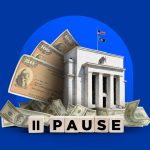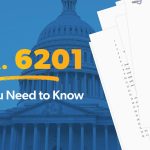Key takeaways
-
The average small business loan amount is $663,000, according to the Federal Reserve
- For fiscal year 2023, the average loan amount for all types of 7(a) loans from the Small Business Administration was $479,685, and the average amount for a 504 loan was $1.08 million
- Large national banks lend more on average than smaller regional banks, while alternative lenders often offer a smaller range of loan amounts
The average small business loan amount is $663,000. That’s according to the most recent data from the Federal Reserve released in 2017 for commercial and industrial (C&I) loans. However, the maximum loan amount you can get from a lender will depend on your credit and financial profile. For example, traditional banks might be more willing to lend you a higher loan amount if you have strong credit compared to a business that has a lower credit score and is considered higher risk.
When looking for a small business loan, you’ll want to consider other factors like the type of business loan, interest rates and repayment terms. To help you find the best small business loan for you, here’s an in-depth look at the loan amounts you can get for a business loan based on different types of business loans.
The amount that commercial lenders will offer you will depend largely on your business’s finances. Generally, traditional banks will lend more than small or online banks, but their loans are reserved for strong credit borrowers. See the average business loan amounts based on the type of loan or lender you choose.
| Lender | Average small business loan amount |
|---|---|
| Bank loans (large national bank) | $593,000* |
| Bank loans (small regional bank) | $146,000* |
| SBA 7(a) loans | $479,685 |
| Online loans | $5,000 to $500,000 |
| Short-term loans | $5,000 to $750,000 |
| Business line of credit | Up to $1 million |
| Equipment financing | Up to 80% to 100% of the value of purchased equipment |
| Invoice financing/invoice factoring | 70% to 90% of the amount invoiced |
| Merchant cash advance | Based on total future credit card or debit card sales |
| Microloans | $13,000 |
*Data based on Federal Reserve’s Survey of Terms of Business Lending, May 2017
Bank loans
Traditional banks, like TD Bank and PNC Bank, typically lend large amounts to borrowers, with business loan amounts ranging from $10,000 to $5 million. That said, banks have been continually tightening credit standards, making approval more difficult. Traditional banks normally require borrowers have several years in business, a credit score of at least 680 and strong annual revenue, such as $250,000.
SBA loans
SBA loans are loans backed by the U.S. Small Business Administration, aimed at helping businesses that can’t get conventional business loans. SBA loans have maximum interest rates and are known for long repayment terms, desirable features for small businesses.
The SBA also guarantees that it will repay a portion of the loan if you fail to make the repayments. Because these loans come with attractive features and many businesses apply for SBA loans, you can expect a long, competitive application process. Here are the average business loan amounts that you can expect with SBA loans:
| SBA loan type | Description | Average loan amount in 2023 | Maximum loan amount |
|---|---|---|---|
| Standard 7(a) | Can be used for nearly all purposes, including working capital, payroll, expansion and equipment. | $877,197 | $5 million |
| Express | Short- and long-term working capital, inventory purchases, construction financing, renovations and purchasing real estate. | $98,297 | $500,000 |
| Export Express | Can be used to cover the costs of participating in foreign trade shows, financing export orders and expansions, real estate acquisitions, equipment purchases and inventory. | $296,562 | $500,000 |
| 504 | Fixed assets that promote job creation and business growth. | $1,083,622 | $5.5 million |
| CAPLines | Helps fund seasonal increases in costs, including inventory or labor, or the labor and material costs for particular projects. | $1,102,772 | $5 million |
| Community Advantage | Designed to assist small businesses in underserved markets. Similar to 7(a) loans, they can be used for real estate, equipment purchases, working capital and more. | $176,636 | $350,000 |
Online loans
Online loans are considered a type of alternative business loan offered through lenders that don’t have brick-and-mortar locations. Online lenders tend to approve and fund loans quickly, with many approving loans within 24 to 48 hours. For example, SMB Compass doesn’t have any branch locations, but you can get a variety of business loans with short funding timelines.
These lenders can offer loans of $500,000 or more in some cases, though overall loan amounts are typically less than what you can get through a traditional bank. Online lenders also tend to have more accessible loan requirements, as some online lenders accept startups or businesses with bad credit. Online loans might be a solid option if you need low loan amounts, fast funding or you’re a subprime borrower.
Short-term loans
Short-term loans are loans with a short repayment schedule, usually 24 months or less. These loans may be available to startups, businesses with fair or bad credit or businesses that simply want to pay off their loan quickly. That said, short-term loans can come with high interest rates, such as 30 percent or higher.
Some short-term loans will also charge a factor rate instead of an interest rate. Factor rates are decimals that get multiplied by the entire loan amount upfront, such as 1.10 or 1.50. They typically cost borrowers more than loans with APRs.
Bankrate insight
Business lines of credit
Business lines of credit are similar to business credit cards in that they’re usually revolving loans. In other words, you can borrow from the line of credit repeatedly, and the available credit will replenish as you pay back past loans.
Credit limits for business lines of credit may be lower than other business loans, but they’re ideal if you know you’ll need to borrow money in the future and want flexible access to funding.
Equipment financing
Equipment financing is a type of term loan that backs the loan with the equipment that you’re purchasing. The loan amount typically equals the cost of the equipment purchase. You can find equipment loans from both traditional banks like Bank of America or online lenders like Triton Capital.
Because this loan is secured by the equipment, you can expect lower interest rates than an unsecured term loan. But the lender is able to seize the equipment if you default on the loan.
Invoice financing and invoice factoring
Both invoice financing and invoice factoring are short-term loans that you borrow against your unpaid invoices. The financing company will consider the creditworthiness of your clients. If approved, it will then advance you 70 percent to 90 percent of your outstanding invoices.
When your clients pay the invoices, you’ll repay the financing company minus fees. With invoice factoring, you sell your invoices to the company, and the factoring company will collect the invoices for you.
These loans can be useful if you have cash flow gaps from slow-paying clients. But consider that they often come with high fees like 4 percent of the invoice amount.
Merchant cash advances
Merchant cash advances offer a lump sum based on your business’s future credit or debit card sales. Once approved, your business will repay the advance with a percentage of your daily or weekly sales. This alternative business loan tends to have high approval rates, even for bad credit borrowers.
But they often come with high interest rates or factor rates that you’ll want to factor in when considering the cost of borrowing. Because the fees can be steep, you may want to use a merchant cash advance as a last resort for emergency funding.
Bankrate insight
Microloans
Microloans are business loans with low loan amounts, such as $1,000 to $100,000. They’re usually offered through SBA lenders or alternative lending companies, like Kiva, with the goal of helping businesses that don’t qualify for traditional business loans. Microlenders often offer small loans with relaxed lending criteria, such as accepting poor or no credit. They may also provide business coaching and education to further support small businesses.
Determining how much you can borrow
The small business loan amount that you can get will depend on your business’s financial profile. Lenders will consider your business’s financial statements, cash flow and debt obligations. They may use these ratios when determining whether you have an acceptable level of debt:
Debt-to-income (DTI) ratio: Measures how much of your revenue is taken up by debt repayments. Most lenders want to see a DTI of 36 percent or lower, though some will approve a higher DTI.
Debt service coverage ratio (DSCR): DSCR measures how much of your revenue can cover your debt obligations, such as 1.5 or 2. Most lenders want to see a DSCR of at least 1.25 or higher.
Ultimately, how much you can borrow depends on how the loan repayments fit into your business budget. To determine if you can afford a business loan, use a business loan calculator to estimate loan repayments. Then, plug the estimated repayment into your business budget. Keep in mind that the lender may or may not approve you for this small business loan amount.
Bottom line
The average small business loan amount varies considerably depending on what type of loan you take out, the lender you choose and your business’s finances. Lenders want to see that you can reasonably repay the loan amount from your expected revenue. Some types of business loans are easier to qualify for because the loan amounts are based on your future invoices or credit or debit card sales.
Always compare interest rates, repayment terms, loan amounts, eligibility criteria and fees when selecting a loan to ensure you find the most affordable option for your circumstances.
Read the full article here
 Trending:
Trending:















